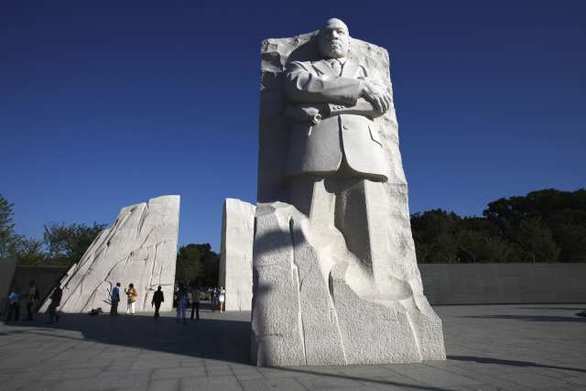 |
| My husband, Jordan, in front of CMOM |
I've been excited about visiting and reviewing the Children’s Museum of Memphis
(CMOM), primarily because I’ve never intellectually engaged children's museums. That is to say, I've always looked at them as places for children to have fun rather than museums where people of all ages can learn. CMOM is a Memphis
treasure held in high regard both locally and regionally. Just today, at a
regional museum workshop, I overheard two colleagues discussing how fabulous
CMOM is. While I was personally impressed with the museum, I also saw some
areas for improvement.
 |
| A classroom at CMOM |
Anna Billings
Gallup, a children’s museum pioneer, said, “To inspire children with this love
for and pride in the institution, they must feel that it was created for them,
and that in all of its plans, it puts the child first.” As
one approaches CMOM, it is obvious that its founders held the same view. Children’s
music plays over speakers, a cage of birds greets children before they even
enter the museum, and the colorful façade hints at the wonders behind the
museum’s door. I brought my husband, as he often expresses his childhood love
for the museum. It was really interesting to watch him, as an adult, encounter
one of his favorite childhood spaces. One imagines that many Memphians bringing
their children to this landmark Memphis
museum have similar attachments to familiar exhibits and the museum landscape.
 |
| Jordan, a Spanish teacher, points out inclusive language! |
We also
enjoyed the museum’s newer exhibits, like one on backyard gardening, which
invited children to “plant” plastic fruits and vegetables in a fabric “dirt”
bed. I especially appreciated how newer exhibits, including a temporary one on
dinosaurs, had dual text in Spanish and English. We valued these efforts towards
inclusiveness, although the landscape could have been more inclusive to children
with physical disabilities. The temporary dinosaur exhibit is rather dark and
items strewn across the floor don’t improve accessibility.
 |
| Vegetables in the garden - Jordan picks a fruit from the apple tree! |
I did enjoy
that nearly every exhibit had a hands-on and text component, ensuring that the
museum is fun for both toddlers and older children. Toddlers who enjoy playing
dress-up in the dinosaur exhibit may grow up to be children who, because of the
fun they had as a child, enjoy learning from text accompanying exhibits. For
now, their older siblings will certainly enjoy reading and learning about
dinosaurs. Although text was concise and simply worded, parents can also be
engaged through it, verbally passing information to children and learning
something new themselves. Older children also enjoy the grocery store exhibit,
where they can “shop” for “groceries” and use cash registers.
 |
Grocery store exhibit, sponsored by Kroger
Visiting children learn about shopping and using money |
I also
appreciated how the museum incorporated local history and culture. My favorite
examples of this were two exhibits, one modeling the Mississippi
River and the other centered around a real FedEx plane. Visitors can
play in the water of the “Mississippi,” see fish that swim in the river, and
learn about the effects of pollution, while physically tracing the river’s path on the periphery of the city. An exhibit like this one teaches children about an important
aspect of the city’s landscape and history. Children are also introduced to a
crucial piece of Memphis’s
economy as they help “load” the FedEx plane with “packages” on a conveyor belt.
As someone avidly interested in local and community history and memory, I
enjoyed that CMOM thought to include these aspects of Memphis culture.
 |
| Model of the famous bridge connecting Memphis and Arkansas |
 |
| The Mighty Mississippi |
At the same
time, I did observe some negative issues. Parts of the museum were not as
well-monitored as they should have been, sacrificing opportunities for education.
We went on a Saturday, likely the busiest day of the week. Many exhibits, like
the doctor’s office, were in absolute turmoil. This exhibit included no textual
interpretation, while the hands-on educational tools were scattered throughout
the area, making it difficult for children to actually learn anything. A more
orderly procedure might correct this. The small grocery store replica, adjacent
to the doctor’s office, is closely monitored by staff to ensure that the area
is kept neat, while, just a few feet away, the doctor’s exhibit is strewn
everywhere and poorly developed. The museum is missing a major opportunity here
to educate visitors.
 |
| Children load packages on a conveyor belt connected to a FedEx airplane |
Another missed opportunity is
Windows to the World, funded by the Indian Community Fund. I was excited to see
how the museum incorporated globalism, but was disappointed to find that the alcove
was mostly empty, with only benches, some framed art, and paintings of generic
books. I couldn’t help but feel that the museum was missing an important
educational element here. Children’s museums should educate, as well as provide
a creative outlet for children to run and play. Aside from a few exceptions,
CMOM does an admirable job of educating and engaging Memphis children.





























